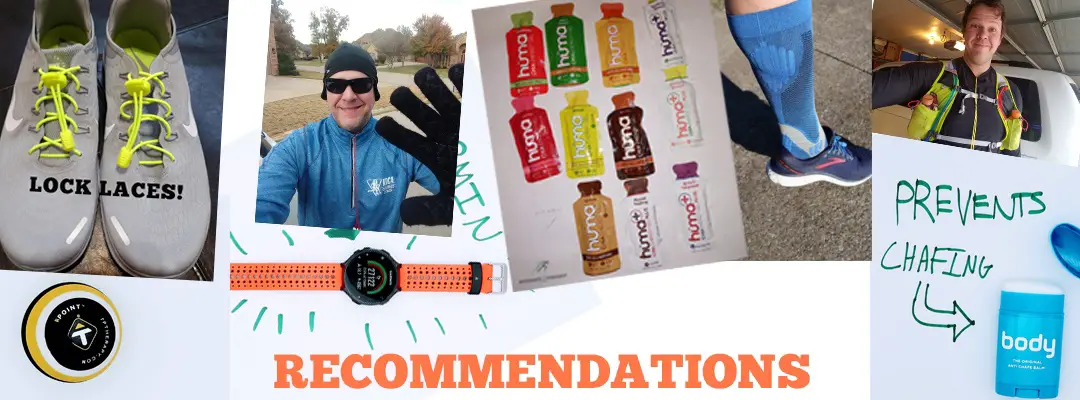If you’re a teen who is ready to start running or the parent of one, this guide has all you need to get to the finish line. Running is a great way to get fit, stay healthy, and enjoy the world around you. Let’s get you ready to run today.
First, we’ll have to get you prepared for running with the right gear and body preparation. Next, you’ll choose the type of running you want to do and where you’ll do it. Then, we’ll guide you on the best practices while running to improve your form, speed, and overall performance. Finally, you’ll finish up reading more tips for keeping teens running.
Get Your Running Gear Ready
While running is one of the most freeing sports, you still need some foundational gear to get started. Your shoes and socks are the most important thing to ensure a fun and efficient run.
The athletic clothes you wear during your run are less important, so long as they fit you comfortably and don’t cause chafing. If you feel you need more support, you can always add on running gear like a knee brace, fanny pack, or armband for your phone.
Shoes
Any athlete or doctor will tell you how important shoes are for safe and healthy training. Your running shoes should fit your feet snugly, with the distance of your thumb’s width between your longest toe and the front of the shoe.
Another important factor in running shoes is their support. Choose a pair with shock-absorbing soles that are thick enough for the impact you’ll make while running your miles.
Socks
Your socks should be high enough so that your foot’s skin is not rubbing against your shoe.
Things like material, thickness, and size of the socks depend on the person’s liking; however, try to avoid 100% cotton socks. If your feet get wet through puddles or sweat, the cotton will remain wet, causing blisters or a bad case of frozen feet. We recommend acrylic, polyester, or another synthetic material.
Get Your Body Ready for Running
You’ve prepared your running materials and now it’s time to prepare your body. Prioritizing your health before running is just as important as starting to exercise. This includes paying attention to your body’s signals, eating well, warming up, and cooling down.
Physical
You may want to begin running to either get into shape or stay in shape. No matter the reason, it’s important to make sure that you’re ready and able to run before you get on the track.
If you are due for one, make an appointment for an annual physical. Let your physician know about your running and fitness goals to get their feedback on how your body may be affected.
Warm-up
As with any exercise, never begin running without a proper warm-up. Warming up begins by dilating your blood vessels, supplying your body with the oxygen it needs for physical movement. It also increases your muscular temperature, which improves muscle efficiency. Your heart rate slowly begins to raise, avoiding a sudden shock or increase in rate should you go straight into your running.
Stretch
Whether it’s before or after a run, stretching is always a protective factor for a runner’s body. Stretching reinforces your muscles, expanding your range of motion and avoiding the tightening of your muscles. This lowers the chance you will strain a muscle, get a cramp, or overload your body while running.
Related: What Types of Stretches Should Runners Perform?
Eat Healthily
What you put into your body will affect the work that you can put out. Develop healthy eating habits to reach your full running potential. This includes eating more lean meats and leafy greens and fewer processed sugary foods. If you’re preparing for a run that’s longer than what you’re used to down the line, consume extra carbs the night before to fuel up.
Water is also vital for runners. You’re going to be sweating and dehydrated after your runs, so don’t neglect your water bottle!
Related: Looking For A Good Diet? Check out which diet is best for runners: Mediterranean, Keto, or Paleo
Set the Stage for Running
Every runner is unique. From setting different distance goals to paving trails in varying environments, running has something for everyone. Before you start your training, decide what type of running is calling your name.
Choose Your Running Location
Runners usually fall into three groups: speed, endurance, and combination runners. Depending on what your style is, you may choose to run on a track, through town, or on nature trails. Some runners even aim for mountain running, but this should be saved for someone with experience.
If you’re just starting, we recommend jogging through a local park to get a taste of whether endurance or speed is your forte. Running solely on hard surfaces will increase the negative impact on your body, particularly on your knees. Alternate between hard surfaces, like sidewalks, and softer surfaces, like dirt, whenever possible.
Stay Safe
As a teen, it’s important to always tell someone in your home where you’ll be running. Give them an estimated time you’ll be back and stick to it. You may want to bring your cellphone and a small whistle. It’s important to never get caught off guard while running, especially if you need to contact someone for help.
If you have a friend who is also interested in running, you could bring them along for both safety and more fun.
Related: How To Stay Safe Running – Beginner’s Guide
Start Running
Once you’re ready to get your feet on the road, we need to make sure you’re on the road correctly. While we learn to run as toddlers, we don’t always learn to run right.
Pacing
While you may start your run off with the most energy, that’s exactly why you shouldn’t start too fast. New runners often get over-excited and start at a pace that is not maintainable for long periods. You want to ease your body into running so that you’ll be able to slowly improve your speed and distance over time.
Start off running at an easy pace. Keep your arms low, swinging them steadily for an improved posture. This is also a stance that allows more air into your lungs. Keep your hands and shoulders relaxed. Your feet should hit the ground under your body, and your knees should stay below your hips. Look forward, not down at your feet or the road.
Related: What Do Pacers Do At A Running Race?
Structure
When a teen begins running, they should have a goal in mind. This goal could be to run for five minutes without stopping or to complete a mile in a set number of minutes. Structure your runs at the beginning to find your starting point. This will give you something to compare to down the line, allowing you to measure progress after a few weeks.
More Running Tips for Teens
Now that you’ve read through the foundational steps to take before beginning to run as a teen, we’ll leave you with the fun stuff. These additional tips will help your running not only improve your health but your lifestyle!
Run with Friends
Running is often seen as a solo sport, but that couldn’t be farther from the truth. Running with others offers motivation, encouragement, and accountability to improve. Not only that but running with friends is way more fun. You can chat before your runs to share tips and celebrate your runs afterward!
A great way to do this is to join your high school’s track or cross-country team. You’ll be able to make new friends while becoming a better runner.
Related: How To Find The Perfect Running Buddy
Set Challenges for Yourself
Running without a purpose is like eating when you’re not hungry – pointless. As a beginner runner – and later, as a professional one – set consistent, small, and achievable challenges for yourself. There’s nothing greater than crushing your running goal and crossing it off your challenge list! It’ll be one factor that motivates you to keep running.
Don’t Overdo It
You may be excited to start running and eventually become an award-winning Olympian. While that is an excellent and achievable goal, you have to start where you’re at. Training too hard at the beginning is a sure way to set yourself up for accidents, aches, and pains.
Start with a few minutes of running and increase each run by a few more minutes. Don’t push yourself to test your limits until you’ve been running for at least one month.
Related: How Do You Know If You’re Overtraining?
Enjoy the Benefits
You don’t have to be a physical trainer to know that running has many physical benefits. From building strong bones to burning calories, it is sure to have you feeling your best.
The bonuses don’t stop there. Running has also been shown to improve mental health. Studies have shown it improves focus and memory, elevates mood, and can even help you switch between tasks faster and more accurately. You won’t only be feeling stronger after running, but thinking clearer too!!
Related: 12 Health Benefits Of Running – You Shouldn’t Ignore!
Have Fun!
There are many reasons to begin running and having fun is at the top of the list. Running is a great way to get in shape, destress, connect with nature, enjoy alone-time, and get out pent-up feelings.
Not only that, but you can also connect with friends, make new ones, and reach new levels you didn’t know you had within you. The real question isn’t “Why run?”, it’s “Why not”!
Related: Begginer Runner FAQ
Are You Looking For A Half Marathon Training Schedule?
12-week/15-week beginner half marathon training plan (free sign up required)
8-week beginner half marathon training plan
8-week intermediate half marathon training plan (easily run a 5K)
4-week advanced half marathon training plan (already run 6+ mile long runs)
Half marathon walking training plans complete with pacing charts
| Help support me and subscribe to my YouTube channel. YouTube video - 30 ways to make your runs less painful! Coach Scott's Credentials:
|
To sign up for a FREE half marathon training schedule, log sheet, and pace predictor CLICK HERE.

Recommended gear for runners
Connect with me:
| facebook.com/BeginnerToFinisher/ |
References
https://www.urmc.rochester.edu/encyclopedia/content.aspx?ContentTypeID=90&ContentID=P01602

